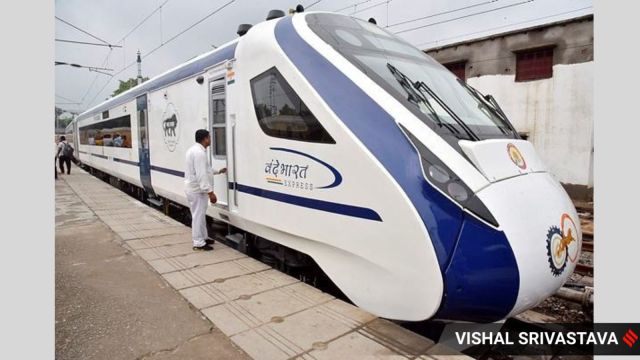Mumbai-Gandhinagar Vande Bharat Express increases capacity by 312 seats, to ferry 936 more passengers daily
Mumbai Central-Gandhinagar Capital Vande Bharat Express has added four more AC chair car coaches to cater to increasing passenger demand.
 Vande Bharat Express Train (Express file)
Vande Bharat Express Train (Express file)In an initiative to address passenger demand on one of India’s busiest business routes, Western Railway has introduced four more permanent AC chair car coaches in the Mumbai Central-Gandhinagar Capital Vande Bharat Express. The services with added coaches began on Saturday, May 11.
With this upgrade, the overall capacity of the train running six days a week will be enhanced by 312 seats per journey. The additional seating capacity will now be 468, or 936 (for up and down journey) per day, considering the 150 per cent capacity utilisation of the Vande Bharat Express. In a week, this amounts to 5,616 extra passengers, and in a month, 22,464. In a year, the train will transport an estimated 2,69,568 additional passengers.
The train earlier had 16 coaches: two 104-seat executive chair (EC) cars and 14 1,024-seat AC chair car coaches, translating to a 1,128-passenger carrying capacity. The 20-coach rake now has 2 EC coaches and 18 AC chair car coaches, taking the passenger capacity up to 1,440 seats.
“Mumbai-Ahmedabad corridor has consistently high demand, and the Vande Bharat Express runs at 150 per cent capacity utilisation. The permanent addition of coaches is a forward-looking measure to address increasing commuter demand without compromising the high standards of speed, comfort and service this train is renowned for,” a Western Railway spokesperson said.
Started as India’s first Vande Bharat route, the Mumbai-Gandhinagar train has become popular with its efficient timings, new-age amenities, and luxury onboard experience. With increased coaches, authorities expect to increase the accessibility of the train for business and recreational travellers between Gujarat and Maharashtra.
Railway authorities said the move comes amid regular passenger feedback and riding patterns. The step is also part of the Railways’ overarching strategy to enhance capacity on high-demand routes and make semi-high-speed riding more accessible and inclusive.











